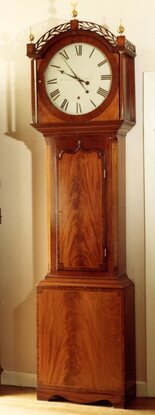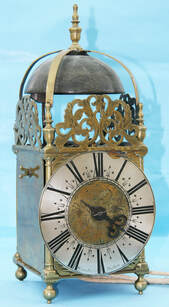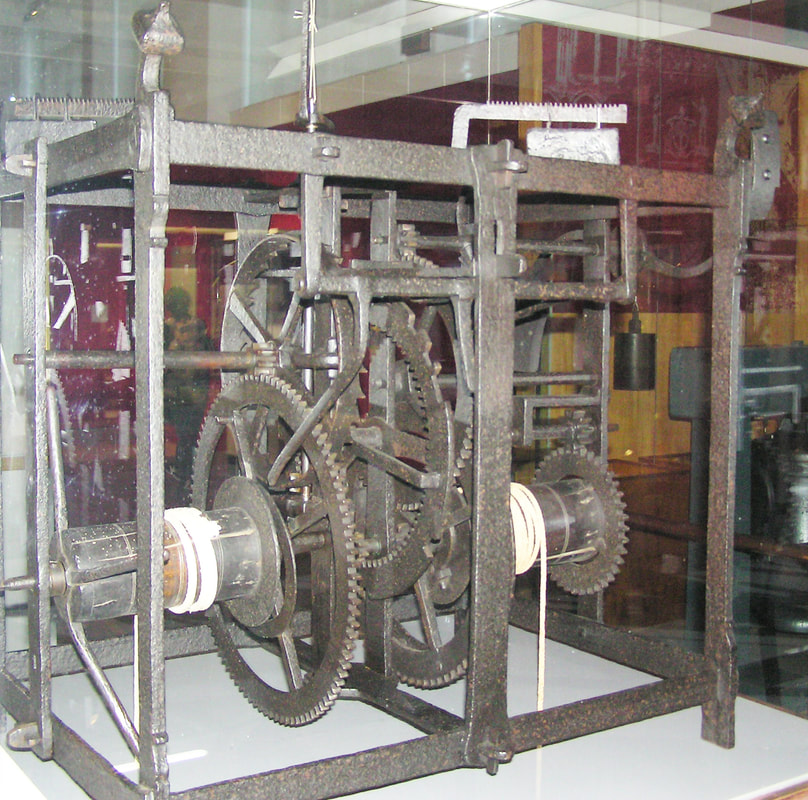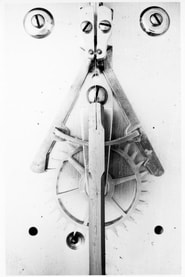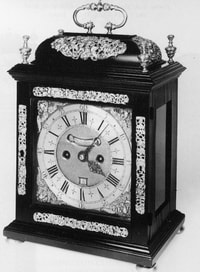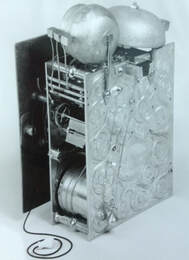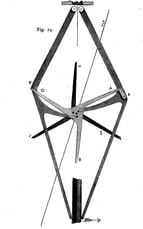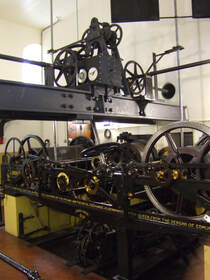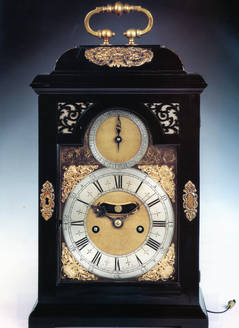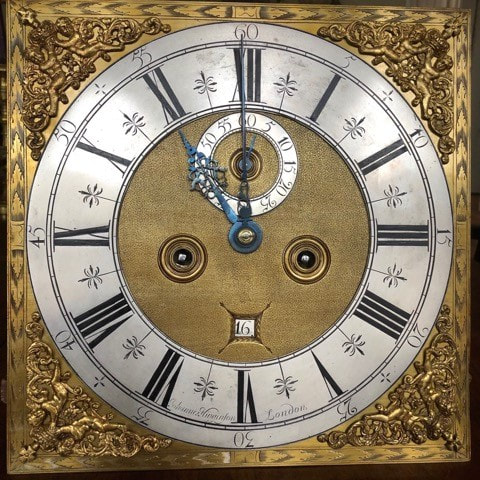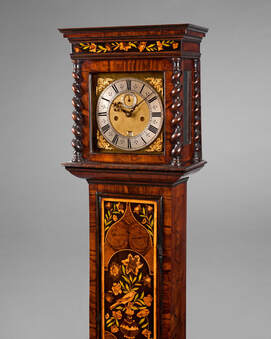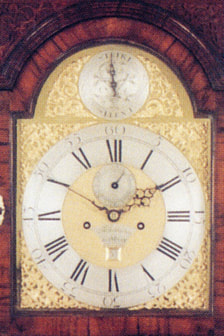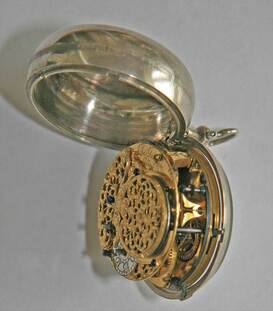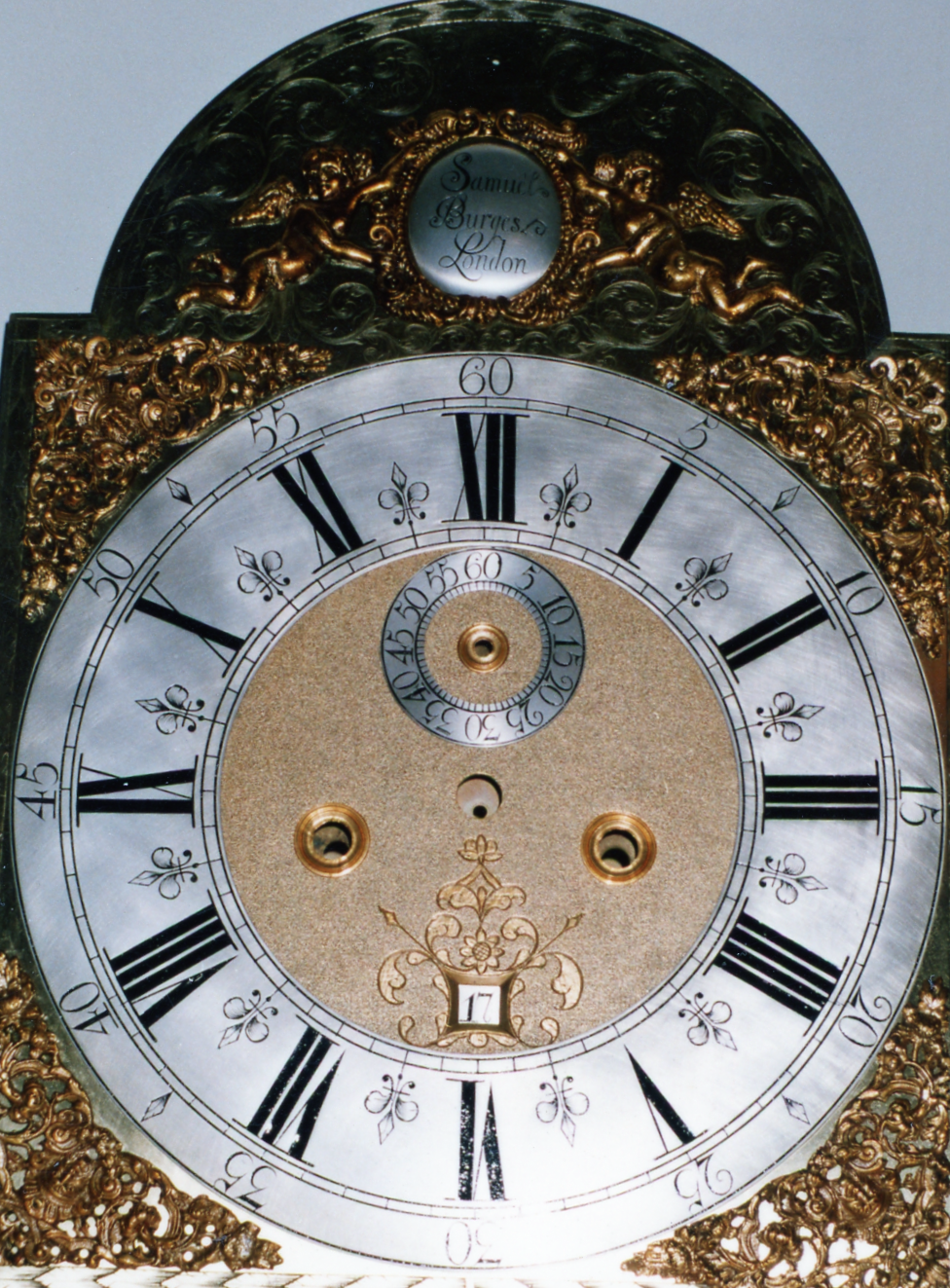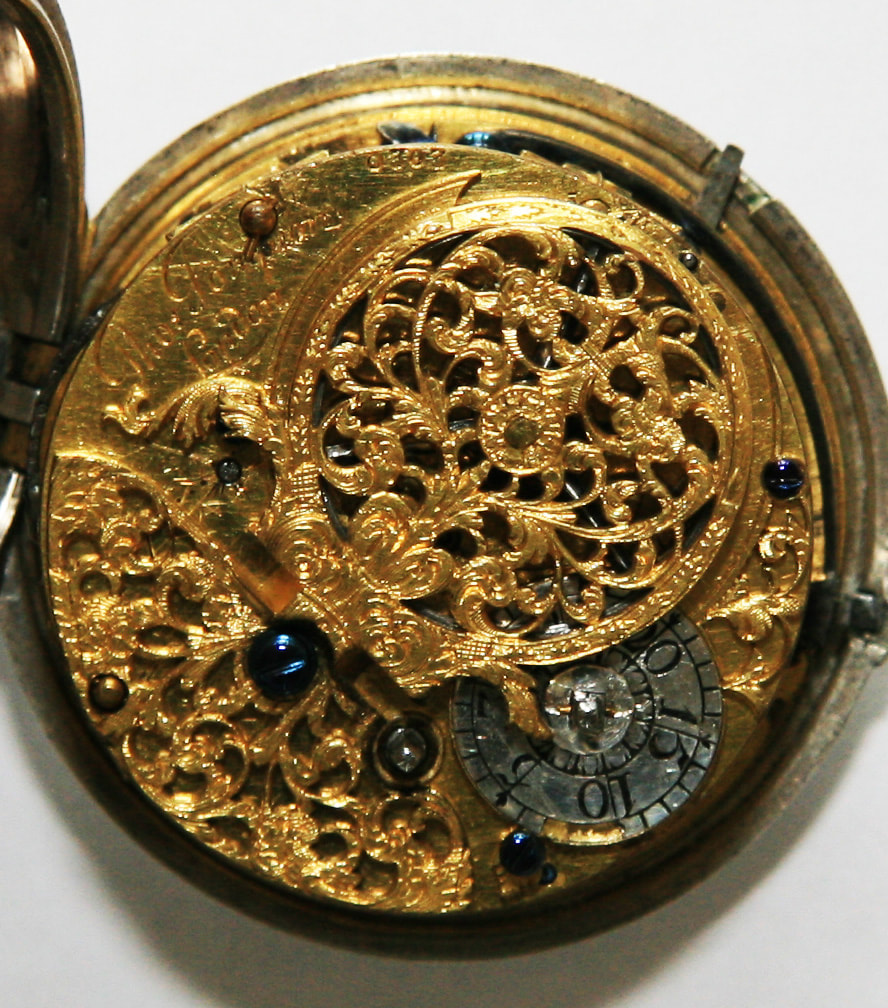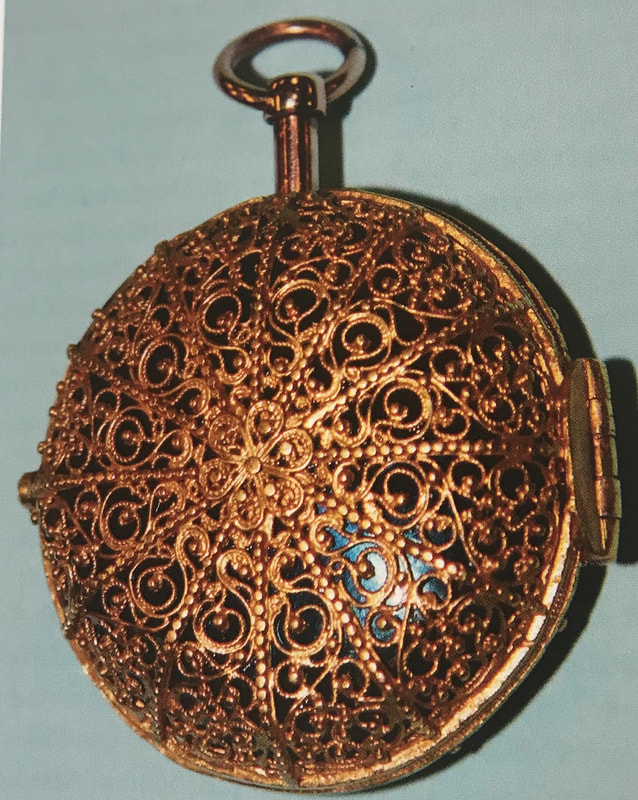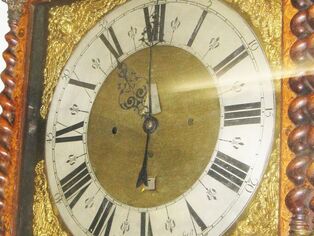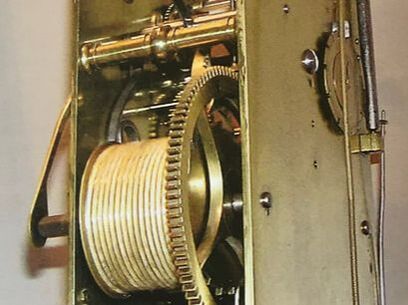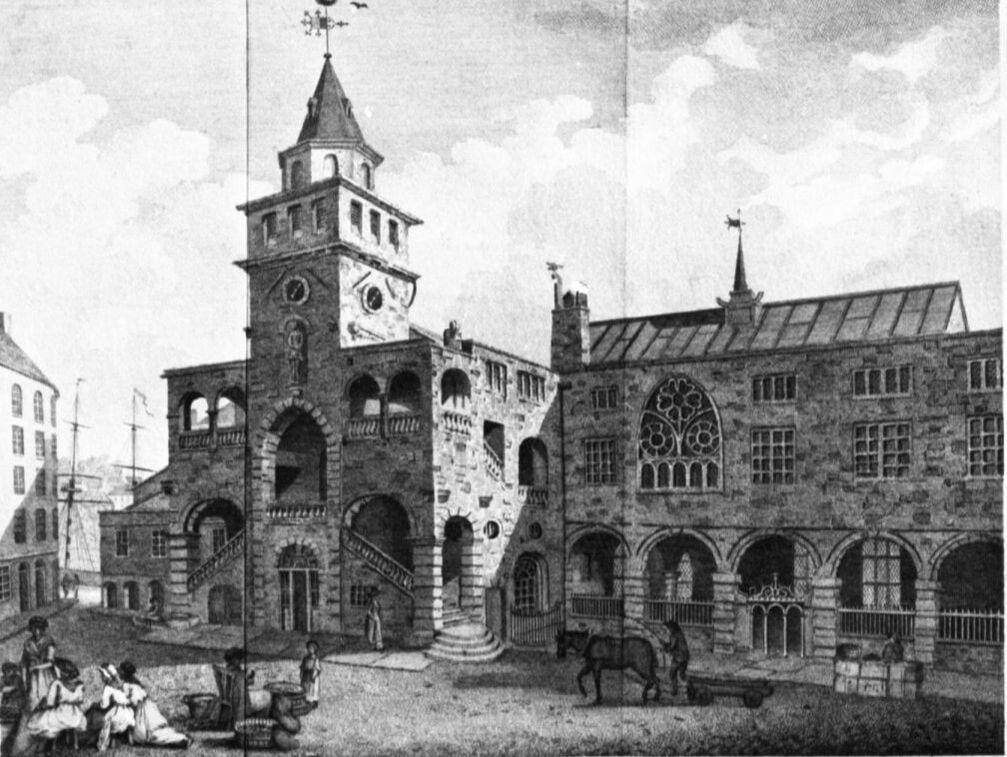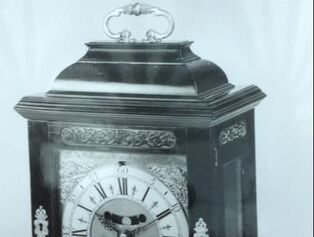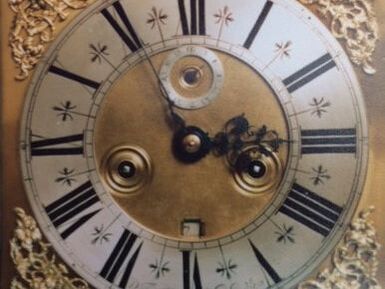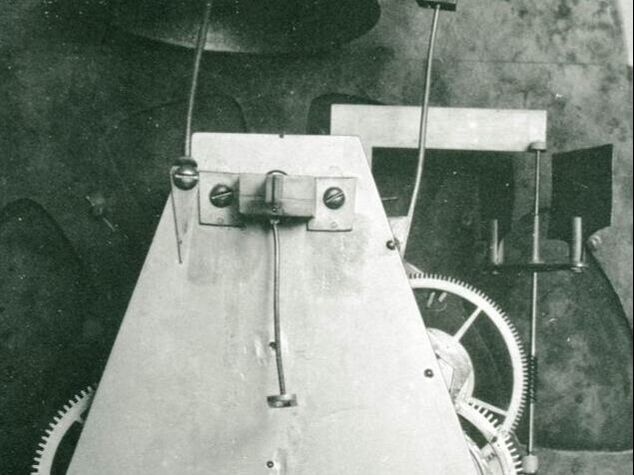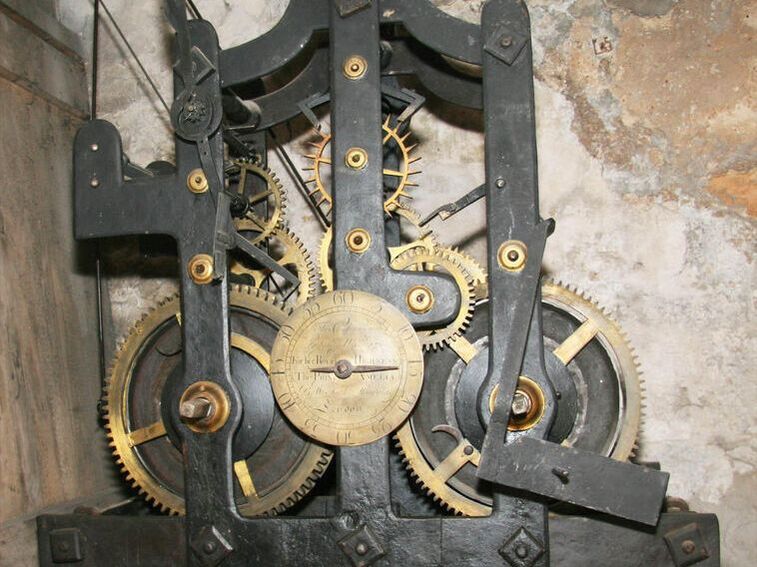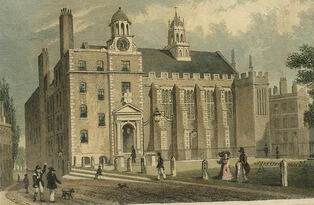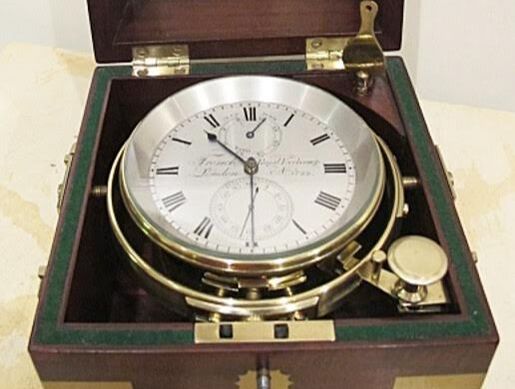A very rare 400 - day clock
|
About author Keith Bates & Pendulum PublicationsPendulum Publications is a small, specialist publisher established in 1980 by Keith Bates. "Early clock and watchmakers of the Blacksmiths' Company" is the 4th book to be published by the company. Keith has also had several articles published in Horological magazines. The company is run by a small but dedicated family team. Read more...
|
More from our blog:
Clock Movement Makers in the Blacksmiths' CompanyIJon Parker writing in Antiquarian Horology for December 2019 asks the question “Was there high quality, wholesale movement manufacture in 17th century London?” He goes on to explain that there were similar features in the movements of signed clocks by some of the leading clockmakers. In 1697 the minutes of the Blacksmiths Company (B.C.) record a statement (see full article) which tells us that many freemen of the Company were fully employed making clock movements and that the leading clockmakers had all been smiths.
The earliest clock movement maker recorded was John Layton. Read more about the early clock movement makers |
Quaker Clockmakers Daniel Quare & Ninian Burleigh.Daniel Quare was one of the most important clockmakers in England at the end of the 17th century and probably only second to Thomas Tompion. Quare excelled not only as a clock and watchmaker but also as a barometer maker. His customers included European Royalty and Heads of State of many countries. Daniel Quare is thought to have been born about 1647/8 in Somerset to Quaker parents. He would have been apprenticed about 1662-1669 and appeared in the London parish of St Martin le Grand by 1671 and joined the Clockmakers’ Company as a brother on 3 April 1671 when he was described as a “great clockmaker”. Read more about Quaker clockmakers here.
|
Did all the clock & watchmakers join the Clockmakers' Company?There were “great (large) tower clocks of iron” made in England from the 13th century.
Most of the metal workers in London were freemen of the Blacksmiths’ Company (BC) which had been formed in the 14th century but did not receive its charter until 1471. The Goldsmiths had formed their own company in 1180 and the Armourers’ Company was founded in 1422. Although the Founders broke away from the BC to form their own company in 1614, there were brass founders who chose to stay in the BC and worked through the 17th century. It was a natural progression for the blacksmiths working with iron to make iron Tower (turret) Clocks, and they became known as the “great clockmakers”. Read more about Tower clockmakers. |
William Prevost and his outstanding clocks.In 2003 the Antiquarian Horological Society organised an exhibition of the finest 17th century clocks made by the leading clockmakers in England, illustrated and described in their book “Horological Masterworks”.
In the section of the book “Perfection”, was a year duration longcase clock by ‘William Prevost of Newcastle’. Who was this relatively unknown clockmaker making outstanding clocks in Newcastle, as fine as the best clockmakers in England at the end of the 17th century? Read more. |
Isaac Jackson of Wylam - Miner, Musician, Mechanic & Clockmaker.Isaac Jackson, junior (1795-1862) was the son of Isaac Jackson who married Mary Mason at Simonburn on 13th June 1795, baptised on 17th Sept 1797. Isaac showed his mechanical skills at an early age and when he left school he worked down the local mine at Wylam. He is thought to have made clocks before 1812 when he was co-op into the local Militia. Read more here.
|
Martin Jackson, Master of the Clockmakers' CompanyMartin Jackson son of Martin of Helmdon Row, Brancepeth, Durham was baptised on 20th July 1671. He was just one of a number of boys from the village who were trained as metal workers; John Dowthwaite trained as a goldsmith in Newcastle, Francis Batty was apprenticed to John and the Threlkelds, Deodatus and his nephew William trained as clock and watchmakers, while William’s younger brother Ralph trained as a goldsmith also in Newcastle.
Read more about Martin Jackson here |
Thomas Tompion's Apprentice - William Moraley.
Thomas Tompion had set up his workshop in Water Lane, off Fleet Street, in early 1671 at the age of 32. Very little is known about his earlier life and his training, apart from the fact that he would have been trained by his father as a blacksmith at a very young age. Read about Tompion's apprentice William Moraley.
|
Edmund Beckett Denison and the Westminster Clock. The Astronomer Royal, Sir George Airy was asked to provide the parameters for the new Westminster clock. He said that it should be capable of keeping time within one minute a week and the first stroke of the hour was to be within a second of true time. Read about the 3-legged gravity escapement and the Westminster clock.
|
Who built Big Ben?When talking about the history of Big Ben, Benjamin Hall, Charles Barry, Augustus Pugin, Edmund Beckett Denison and Edward J. Dent all get a mention. But what roles did they play? Read more about Big Ben |
Daniel Quare Master ClockmakerDaniel Quare is thought to have been born about 1648 in Somerset and apprenticed to an unknown master 1662-1669 and probably worked as a journeyman until 1670. He was working in the parish of St Martin-le-Grand, Westminster by 1671 when the Clockmakers' Company discovered him and made him a brother of the company on 3 April 1671 as a great (turret) clockmaker.
Read more about Daniel Quare |
The Higginson brothers - Clockmakers at the end of 17th Century.At the end of the 17th Century, some clockmakers from the B.C. were supplying movements to other clockmakers, consequently very few of their signed clocks have been recorded. The Higginson brothers John and Nathaniel trained a number of later successful clockmakers and so must have produced a large number of clock movements but very few of their fine clocks have survived.
Read about the apprentices they trained |
"Great" clockmakers in the Blacksmiths' CompanyOne of the most important “great” clockmakers of the 17th century and probably the least well-known, was William Clement. He is the un-sung hero of horology. If it had not been for William Clement, clocks might still have been treated as objects of amusement and not useful timekeepers.
William Clement invented the anchor escapement about 1665. ... Read More. |
Great Clockmakers of the 17th CenturyAfter the Great Fire of London in 1666 the Clockmakers’ Company (C.C.) were enrolling new members, 28 of whom were described as “great clockmakers” between 1669-1690; However, in 1636 the C.C. had signed an agreement with the B.C. saying that they would not enrol any “great clockmakers of iron clocks”, now called turret clocks.
. ... Read More. |
Dating antique Brass Dial Longcase clocks. - Part 2In Part 1. I attempted to show some of the problems facing prospective buyers of early 18th century clocks. Following on from that theme I would like to look at some clocks made after about 1730.
After Humphrey Maysmore’s death in 1706 his widow Mary turned their son Humphrey over to Richard Vick in the C.C. who had been trained by Daniel Quare. ... Read More. |
Was Thomas Tompion the leading clockmaker at the end of the 17th Century?Thomas Tompion has been described as the father of English clock and watchmaking by a number of writers. In 1697 the Blacksmiths’ Company (BC) made the following declaration :- “ the greatest Artists therein [clockmaking] of this day were Originally Smiths” .....We then have to ask was Thomas Tompion one of the greatest artists in clockmaking, if so, was he a member of the BC? .....Read More.
|
Dating Early Antique Longcase Clocks
|
Sophia Metcalfe - Memoirs of a lady watchmakerSophia Metcalfe, born 1881, was the daughter of Ralph Metcalfe watchmaker and jeweller at 168 Scotswood Road, Newcastle and apprenticed to her father 1895-1899.
"Now I will commence at the beginning of my apprenticeship at 14 years of age. I was never idle one moment and we were always busy. At that particular time.....Read More |
Richard Craile - a watchmaker in the Blacksmiths' CompanyRichard Craile was one of the early 17th century watchmakers. He was born in 1600, the son of William Craile a curate of Grantham and apprenticed to Robert Grinkin about 1615. He took his freedom of the BC on 18th January 1626/7 . ... Read More.
|
Astronomical clocks for King Charles II - Samuel WatsonWatson made two astronomical clocks for King Charles II, one in 1682 for £215 and the second was a special commission which took Watson from 1683-1690 to complete.
Read more |
Antique Clockmakers & their freedom from the London GuildsAll trade in the City of London, from very early times, was controlled by the trade guilds or companies. A craftsman had to be a freeman of one of these guilds in order to trade within.....Read more
|
Plague epidemics & their effects on ClockmakersWhen I wrote about the effects of the plague at different times in our history, I never dreamt that we would be experiencing a pandemic similar to what the clock and watchmakers experienced in 16th and 17th centuries. Read More
|
William Moraley, watchmaker of NewcastleMany years ago, while researching London clockmakers I came across a report in the London Gazette for 31st May 1729 which stated that William Moraley, watchmaker of Newcastle had been declared .... Read More
|
Was your ancestor a clock or watchmaker?Here is a fascinating story, tracing the family tree of a lady who was the descendant of a clockmaker. If you think your ancestor may have been in the clock and watchmaking trade and you would like ... Read More
|
John Walker, clockmaker extraordinaireApprenticed to Charles Thompson on 6th June 1734 but not freed in the BC until 1749. The competition for a clockmaker in London must have been very strong at that time because John..... Read More
|
A right Royal ClockI was on a visit to Newton Hall, Northd., in the late 1970s when I noticed a turret clock in the stable block. I asked if I could see the movement of the clock and Captain Widdrington, the owner ....Read More |
|
Chronometer makers in the Blacksmiths' CompanyMy interest in chronometers and chronometer makers was aroused by a two part article written by Charles Aked on the subject of “Longitude and the Marine Chronometer” in ......Read More
|

